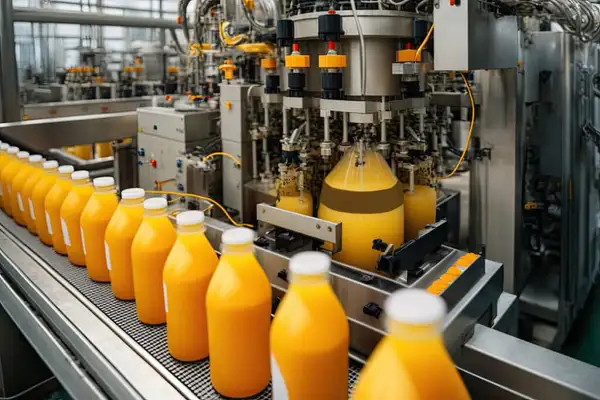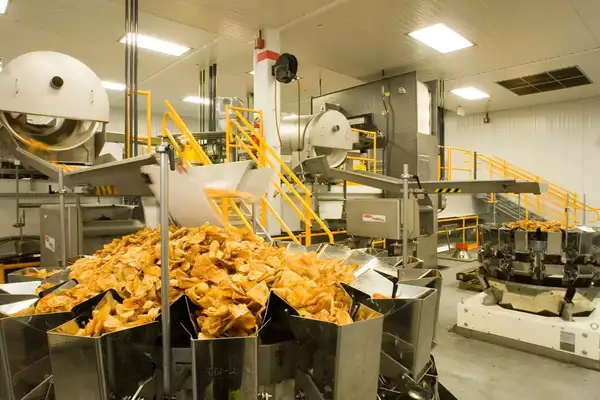- About
- Courses
- Advisory
💡 Build the Basics
- FSMS
- Home-Based
- BeSS
- MeSTI
- Halal IHCS
💡 Export Ready
- Food GMP
- HACCP
- VHM
- Halal Assurance System (HAS)
💡 Go Global
- ISO 22000
- FSSC 22000
💡 Others
- NPRA GMP & GDP
- Blog
- Contact Us
Hey there, food safety enthusiasts! 🌟
If you’ve ever felt lost in the sea of food safety certifications, you’re not alone. With terms like MESTI, GMP, HACCP and ISO 22000 flying around, it can be a bit overwhelming. But don’t worry!
In this blog, we’ll break it all down, making it easy to understand how these certifications work and why they matter. By the end, you’ll be equipped with the knowledge to navigate the world of food safety certifications confidently.
Let’s get started!
So, let’s kick things off with MESTI. This stands for “Makanan Selamat Tanggungjawab Industri.” It’s primarily aimed at micro and small-sized food businesses.
The main goal is to ensure food business operator comply to food safety regulations.
MESTI certification is essential for food and drink manufacturers. Picture this: if you own a ready-to-eat malay kueh processing factory, MESTI certification shows customers that you meet basic food hygiene standards. It’s like a badge of honour that tells your patrons.
“We care about your safety!”

1. Preparation of Documentation:
You’ll need to compile thorough documentation outlining your food safety practices. This includes standard operating procedures (SOPs), records of food handling, and training materials for staff. Proper documentation is crucial as it demonstrates your commitment to food safety.
2. Operational Period:
Before applying for certification, your business must operate for a minimum of three months. This period allows you to establish and refine your food safety practices in a real-world setting, ensuring that you can consistently meet safety standards.
3. Audit:
Submit your MeSTI application through online FoSIM portal. MOH will be the certification body to conduct audit on site to assess your premises and implementation. During this audit, they’ll check for compliance with hygiene and safety standards, ensuring that your food preparation areas and storage areas are up to par.
3. Meeting Hygiene Standards:
It’s essential to ensure that your premises meet stringent hygiene standards. This includes everything from cleanliness to proper food storage practices. If any issues are identified during the inspection, you’ll need to address them before certification can be granted.
4. Reporting the audit:
Following a successful audit, a final report will be posted on the FoSIM portal. This report outlines the findings of the audit. Any non-compliance shall be addressed within the agreed time frame. Upon closure of those non-compliance, your MESTI certificate will be released!

Next up is Good Manufacturing Practices (GMP) certification.
This one focuses on maintaining consistent food hygiene compliance in food production. It targets a broad range of food industries and emphasizes key areas like layout, personal hygiene, maintenance, waste control and pest control.
To achieve GMP certification, businesses must demonstrate adherence to strict guidelines. For instance, the layout of food production areas must facilitate smooth workflow while preventing cross-contamination. Equipment should be maintained regularly to prevent malfunctions that could lead to safety hazards.
The same audit process that applies to MeSTI will also be applicable for GMP certification. The MOH conducts audits to evaluate compliance with GMP standards. A food factory that receives GMP certification not only assures its customers of food hygiene but also sets itself apart from competitors who may not prioritize such standards.
Now, let’s talk about HACCP, or Hazard Analysis Critical Control Point. This is a product certification specifically aimed at the food production industry. Its main goal is to identify and manage food safety hazards—think physical, chemical, biological, and allergenic risks.
HACCP focuses on critical control points (CCPs), which are specific points in the process where risks can be controlled or eliminated. For example, if a supplier delivers fresh produce, the manufacturer needs to ensure that it is free from harmful pesticides. If this step is overlooked, it could lead to contamination of the final product.
For instance, a juice manufacturer needs HACCP certification to ensure their drinks are safe to consume. This involves conducting a thorough analysis of the production process to identify potential hazards at every stage. From sourcing ingredients to packaging, every step is scrutinized for safety risks.

Audits for HACCP certification can be performed by the MOH or third-party certification bodies, adding a layer of credibility. This means that a manufacturer can choose to have an independent organization assess their processes, ensuring objectivity and thoroughness. Achieving HACCP certification not only meets regulatory requirements but also builds consumer trust.
ISO 22000 certification is a bit different; it’s a system certification applicable within the food factory activities. This one’s all about context, risk assessment on both the organization and product categories, emergency preparedness and etc. If you’re managing a large food processing plant, ISO 22000 certification helps you tackle internal and external risks effectively while ensuring compliance with legal standards.
Unlike the other certifications, ISO 22000 audits are usually done by third-party bodies—so you know it’s thorough! ISO 22000, specifically for food safety management systems, is designed to ensure that organizations effectively manage food safety risks in their operations.

ISO 22000 certification involves a holistic approach to food safety. It requires businesses to assess their context, including external factors like market conditions and internal factors like staff turnover. This comprehensive view allows organizations to develop a robust food safety management system tailored to their unique circumstances.
Moreover, ISO 22000 certification is recognized internationally, making it valuable for businesses looking to expand globally. It signals to customers and partners that a company is committed to maintaining high standards of safety and quality. This can open doors to new markets and opportunities.
Understanding the distinction between certifications provided by the Ministry of Health (MOH) and those from third-party certification bodies (CBs) is crucial for food businesses. Here’s a closer look at the key differences:
1.Product vs. System Certification:
2. National vs. International Certification:
3. MS 1480 HACCP vs. Codex HACCP:
4. CCP in HACCP vs. CCP & OPRP in ISO 22000:
Are You Ready ?
Before you dive deeper into the MOH certification scheme, let’s take a moment for a self-assessment. Ask yourself:
If any of these questions leave you uncertain, it’s time to take action!
Partner with Magcolm Solutions for Success!
At Magcolm Solutions, we’re here to guide you through the maze of food safety certifications. Whether it’s training your staff, organizing documentation, or preparing for audits, we’ve got your back. Don’t wait for a compliance issue to arise—let’s work together to build a robust culture of safety and quality in your food business!
It’s a certification for small and medium-sized businesses ensuring food safety compliance.
The Ministry of Health (MOH) takes care of GMP audits.
It identifies and controls food safety hazards in production.
Absolutely! ISO certifications are respected globally.
Nope! With the right resources, anyone can navigate the certification process.
This can vary, but most certifications require periodic audits to maintain compliance.
So there you have it! Understanding the MOH certification scheme doesn’t have to be overwhelming. Each certification—MESTI, GMP, HACCP, and ISO 22000—serves a unique purpose in ensuring food safety and compliance. Whether you’re running a ready-to-eat food central kitchen or a large food factory, getting certified is a great way to show your commitment to safety.
In the food industry, safety is paramount. The certifications not only protect consumers but also enhance your reputation as a responsible business owner. Imagine the peace of mind knowing that your practices meet regulatory standards and that you’re providing safe food to your community.
Let’s make the food world a safer place together! 
Happy certifying!